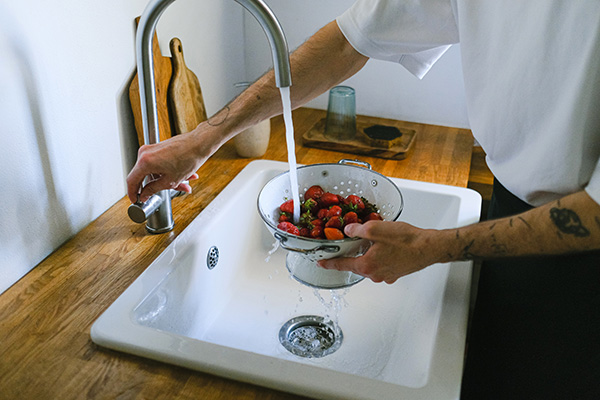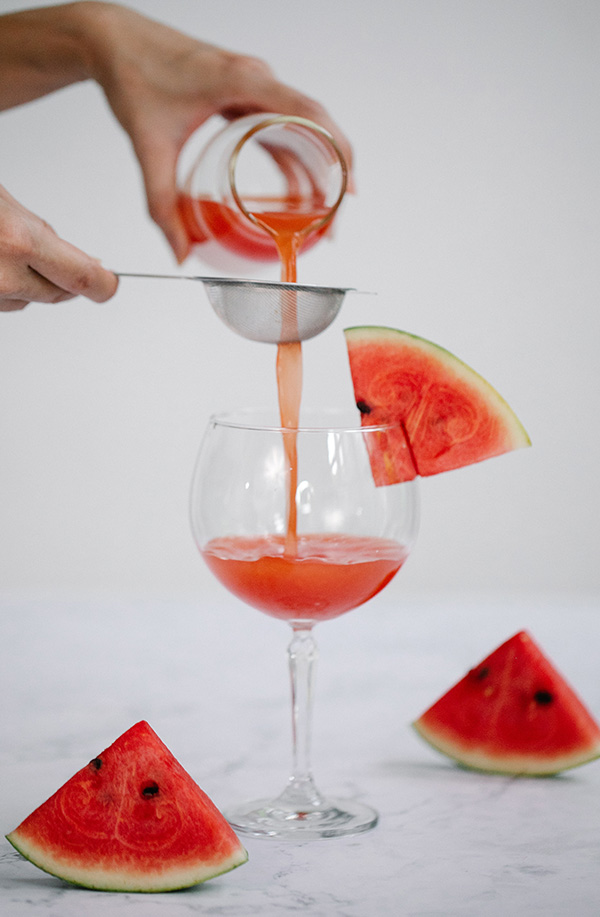Do you want to avoid confusing kitchen equipment that seems to serve similar purposes? You're not alone! Many home cooks and even seasoned chefs have pondered the differences between strainers and colanders. These two kitchen tools might appear interchangeable at first glance, but they each have unique features and functions that make them indispensable in the culinary world.
Strainers and colanders are humble kitchen tools indispensable for separating solids from liquids, but understanding their differences can elevate your cooking game to a whole new level. Whether you're an aspiring home cook or a seasoned chef, understanding the differences between a strainer and a colander can elevate your cooking game.
In this article, we'll clarify the primary distinction between strainers and colanders. We'll also look at how each kitchen tool should be used, different variations, and which to use when.
What Is A Colander?

Image Source: Pexels
A colander is a bowl-shaped kitchen utensil, typically with a flat-bottom stand and a pair of handles. It has bigger holes than strainers and is useful for draining cooked pasta water, rinsing meat, and washing produce. Perfect for anyone who likes to cook pasta or rinse fruits and vegetables. Colanders are offered in various sizes but feature sizable drainage holes. The different bowl sizes allow colanders to separate liquids from small items (such as berries) and large items (such as tomatoes).
Filtration Level Of Colanders
The larger holes on colanders offer moderate filtration, separating liquids from large foods like cooked pasta or steamed vegetables. Some colanders are sold with a stainless steel mesh insert, allowing the colander to filter liquid from small food particles.
When To Use A Colander
Because colanders have bigger holes than strainers, it's important to only use them in instances where the food inside of the colander bowl is not able to fit through the holes. Colanders are commonly used to:
Draining Pasta: One of the most frequent uses of a colander is to drain pasta after it has been cooked. It ensures that the excess water is completely removed, preventing soggy pasta.
Washing Vegetables and Fruits: When you need to wash and rinse vegetables or fruits, especially larger ones like lettuce or grapes, a colander is ideal. A colander enables water to pass through the food freely, ensuring thorough rinsing.
Straining Broths and Stocks: For larger quantities of liquids, such as homemade broths or stocks, a colander can help strain solids, herbs, and bones, leaving you with a clear, flavorful liquid.
Blanching and Shocking Vegetables: After blanching vegetables (briefly boiling, then cooling in ice water), a colander can quickly drain liquid and separate them from the ice water.
Draining Canned Goods: When using canned goods like canned beans or vegetables, a colander helps rinse away excess salt or brine from the canned ingredients.
Cooking Pasta in Batches: A colander is useful for draining each batch efficiently if you're cooking pasta in batches or large quantities.
Washing Leafy Greens: When washing leafy greens like lettuce or spinach, a colander allows you to submerge them in water and then drain them easily without damaging the leaves.
Straining Cooked Potatoes: When you've boiled potatoes for mashing or potato salad, drain the hot water with a colander before further preparation.
Straining Large Quantities of Cooked Vegetables: If you've steamed or boiled a large batch of vegetables, a colander can help you drain them efficiently before serving or incorporating them into your dish.
Cooking Seafood: When boiling seafood like crabs or lobsters, a colander can drain the water and separate the cooked seafood from the cooking liquid.
Thawing Frozen Foods: To drain water and excess moisture from thawed frozen foods like vegetables or seafood, a colander can be used to speed up the process.
Rinse fruit and vegetables: A colander can be great for rinsing fruit and vegetables to help you drain liquids.
Drain Canned Food: Colander can be helpful to drain canned food items by allowing liquid to drain out.
Types Of Colanders
Colanders come in various types, each designed to suit specific cooking and food preparation needs. Here are some common types of colanders:
Chinese Colander—These stainless steel colanders have larger, perforated openings and no handles. This makes them easier to store and more commonly found in restaurants where multiple colanders will be used.
Two-Handle Colander—The double handles on this two-handle colander make it easier to use, although it is harder to stack and store.
Vegetable Colander—Vegetable colanders feature a noticeably deep basin that holds large quantities of fruits and vegetables.
Perforated Colander —This is the most traditional type of colander, featuring evenly spaced holes or perforations throughout its surface. It's ideal for draining liquids from pasta, vegetables, and fruits.
Mesh Colander—Mesh colanders have a fine mesh screen instead of perforations. They are excellent for straining finer ingredients like rice, quinoa, and small pasta, preventing even the tiniest particles from passing through.
Over-the-Sink Colander—These colanders are designed to sit over the kitchen sink, saving counter space. They often come with extendable arms or handles to fit various sink sizes.
Collapsible Colander—Collapsible colanders can be flattened for easy storage. They are a compact and space-saving choice, ideal for small kitchens.
What Is A Strainer?

Image Source: Pexels
Strainers are kitchen tools that use small holes in wire mesh to strain foods from liquid. Strainers can even strain thick liquids from thinner liquids (such as yogurts from their corresponding wheys). Strainers are typically designed to be placed over a bowl or other container, so they don't have a flat base to set upon.
Filtration Level Of Strainers
Because of the finer mesh found on strainer baskets, they offer finer filtration than the larger holes of colanders. Strainer baskets are available in a range of wire mesh sizes, with the filtration level increasing with finer mesh.
When To Use A Strainer
The fine mesh on strainers makes them a suitable kitchen tool to separate liquid from fine food particles. Strainers are commonly used to:
Draining Small Ingredients: Strainers are excellent for draining small ingredients like rinsing rice, quinoa, couscous, or orzo. The fine mesh prevents these tiny items from slipping through, ensuring only the liquid drains away.
Removing Seeds and Pulp: A strainer is your best friend when you want to extract seeds and pulp from freshly squeezed juices, such as orange or lemon juice. It ensures a smooth, seed-free liquid.
Straining Sauces and Soups: Strainers are ideal for removing lumps, solid bits, or impurities from sauces, soups, and broths. Pass the liquid through the strainer to achieve a silky-smooth texture.
Sifting Dry Ingredients: When baking, you can use a strainer to sift dry ingredients such as flour, cocoa powder, or powdered sugar. This process removes lumps and aerates the ingredients, resulting in a lighter, fluffier texture in your baked goods.
Blanching and Cooling: After blanching vegetables or cooking them in hot water, a strainer can be used to quickly cool them down by immersing them in cold water. This action halts the cooking process and helps retain the vibrant color and crisp texture of the ingredients.
Rinsing and Washing: Strainers are handy for washing and rinsing produce, such as berries, leafy greens, or small fruits. Colanders permit excess water to drain away while ensuring your ingredients are clean and ready for use.
Making Consistencies: If you're making homemade purees, baby food, or mashed potatoes and want a smoother consistency, pass the ingredients through a strainer to remove any remaining solids or fibrous bits.
Infusing Flavors: When infusing flavors, such as herbs or spices, into a liquid (e.g., for herbal tea or infused oils), a strainer can help separate the solids from the infused liquid, leaving you with a clear and flavorful result.
Draining Canned Foods: When using canned ingredients like canned beans, a strainer can be used to rinse and drain them, removing excess salt or brine before incorporating them into your dish.
De-Clumping Ingredients: If ingredients like confectioners' sugar or cocoa powder have clumped together, a strainer can help break up these clumps and ensure a smooth, lump-free texture.
Making Custards and Creams: When making custards or pastry creams, straining the mixture before it sets can remove any cooked egg bits or lumps, resulting in a silky-smooth final product.
Types Of Strainers
In addition to the standard strainer, there are other types of strainers that each differ slightly in their design and intended use.
China Cap Strainer—This cone-shaped strainer basket is ideal for removing seeds from soft foods, such as fruits and vegetables. The China cap strainer sometimes comes with a pestle and a stand to hold it over a bowl.
Chinois Strainer—The conical-shaped strainer with the finest mesh of any on this list, the chinois strainer helps maintain an extremely smooth consistency in purees and sauces. They are occasionally referred to as a "foley mill" as well.
Strainer Basket—This cylindrical strainer's deep shape is designed for dipping into deep pans of boiling water. It can also hold foods for blanching or boiling.
Cocktail Strainer—This small mesh basket strainer fits over either a glass or cocktail mixer and filters out ice and herbs from the mixed drink.
Colander Vs. Strainer - Which Should You Use?
With both of these seemingly similar kitchen tools serving very different purposes, it's important to know which is best suited for your intended purpose! It's also important to know these differences when choosing what kind of colander or strainer to purchase. Thinking through which size of item best suits your needs, your preference for material, and your budget will help guide your purchasing decisions.
Size
Both colanders and strainers are available in an extensive range of sizes. When deciding between kitchen tools, consider how much food will need to be strained at one time and where the colander or strainer will need to be stored when not in use. Large bowl sizes on colanders will necessarily take up more space than the typically smaller strainer baskets. However, it is possible to purchase a large colander made with silicone that can collapse and store flat.
Materials
Like many other practical kitchen tools, colanders can be made from many different materials. Typically, colanders are made from stainless steel, plastic, and silicone. Due to the fine holes found on strainers, they are typically composed of a stainless steel frame and fine wire mesh.
Cost
Cost is a significant factor to think about when buying kitchen utensils. As with any product, there is a large range of cost options. These depend on variables such as the size of the colander or strainer, the materials it is made from, and the production process itself.

